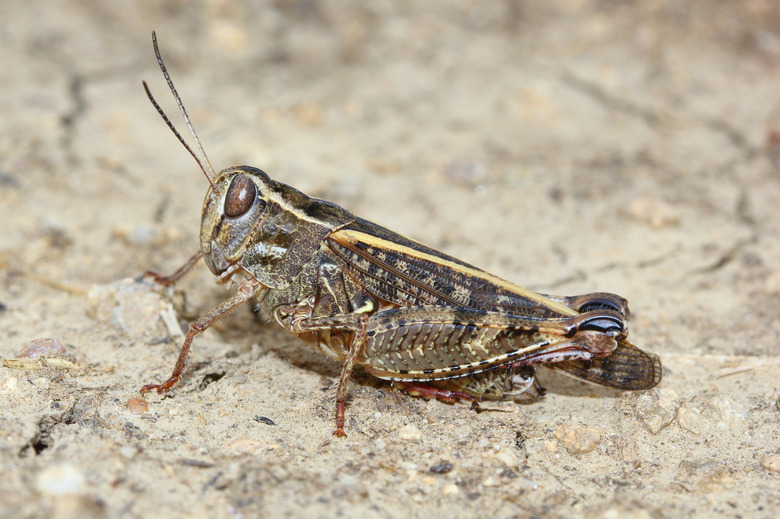How To Tell If A Cricket Is Male Or Female?
Whether you're raising crickets as pets or as food for your other pets, you might wonder about the ratio of males to females to maximize the production of offspring. Cricket sex is easy to tell by the number of appendages extending out from the abdomen. Males have two, and females have three.
Look for the ovipositor
Look for the ovipositor
When buying crickets to raise, you'll want to have more females than males. This will maximize egg production, resulting in more baby crickets. It also keeps your male crickets healthier by having abundant females, as they age less quickly when they don't have to constantly compete to mate.
The easiest way to determine whether a cricket is male or female is to look at the tail end. Males have two spikes protruding from their abdomen called cerci that are covered in about 750 tiny sensory hairs that act as an extra set of antennae. Cerci help detect airflow, vibrations, sounds, scents, mates, and other information that help a cricket evaluate his environment.
Female crickets have a third appendage that appears as a long spike extending from the tip of the abdomen, known as the ovipositor. The female inserts her ovipositor into the soil to lay her eggs.
Listen to the song
Listen to the song
Male crickets are the only ones who make the characteristic chirps associated with crickets. Males have special features on their wings that they rub together to produce the sound. Located on the cricket's upper wings, a prominent vein on each wing acts as a scraper and teeth that make the chirping song. Males use this sound to attract mates.
The males don't just chirp randomly, however. They make three distinct types of chirps. One is used to call the female to his burrow, one is used to woo her and seal the deal before cricket sex, and the third is for warning away other males.
If you grew up on the Hawaiian island of Kaui, you might be shaking your head at this point. Crickets on the island quickly evolved to not chirp thanks to parasitic flies that lay their eggs in singing male crickets. The larvae hatch and eat the noisy male from the inside out. The crickets on the island evolved into nonchirping insects in about 20 generations.
Male crickets are on the bottom
Male crickets are on the bottom
Unless you keep a few males and females together in a separate aquarium from the general crowded cricket habitat, you might not ever witness the actual act of cricket sex. If you are so lucky to witness the event, it might surprise you to know that the male isn't on the top during the copulatory act.
Female crickets mount the male from behind. The male ejects a milky sac called a spermatophore. He uses his cerci to pass it to the female's cerci. She then positions it above her genital opening where a long tube on the spermatophore enters her reproductive tract and deposits sperm in her seminal receptacle. She can store the sperm there for about two weeks, fertilizing each egg before she passes them down her ovipositor and into the warm, moist soil.
Males are aggressive
Males are aggressive
Although female crickets will occasionally fight if food is in short supply, male aggression is a normal part of mating behavior. Besides having a special chirp to warn away other males, male crickets will guard the female once she receives his spermatophore. If he is unsuccessful, another male will remove it, eat it, and try to win mating rights with the female himself.
Male cricket fights begin with fencing one another with their antennae. One combatant might typically withdraw at this time, sensing that the other male is stronger. If the challenge continues, the male crickets stand on their forelegs, flare their mandibles at one another, kick, and sometimes bite. The scuffles are usually short-lived and end before either party sustains a serious injury.
References
- Science Daily: Plentiful Females Keep Male Crickets Young
- Journal of Neurophysiology: The Cricket Cercal System Implements Delay-Line Processing
- Insect Identification: House Cricket (Acheta domesticus)
- Understanding Evolution: Quick Evolution Leads to Quiet Crickets
- Invertebrate Brain Platform: Characteristic Behavior of Crickets
- Cornell University: Agonistic Behaviour in Male and Female Field Crickets, Gvyllus bimacufatus, and How Behavioural Context Influences its Expression
